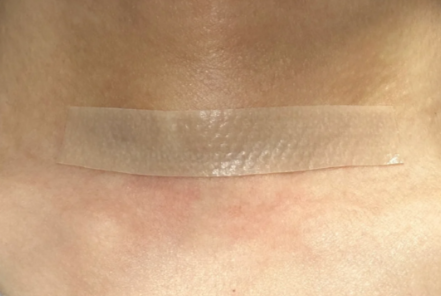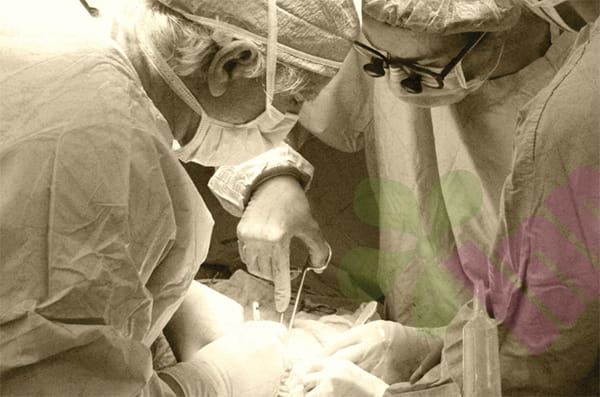In midsummer, the heat is sweltering, and the cicadas are chirping. Aunt Zhang, who had just finished surgery, looked at the slightly damp gauze on the edge of her abdominal wound and couldn't help but worry: "How can the wound heal quickly on such a hot day?" Her worries are not unnecessary - the hot and humid summer is the time when postoperative wound care requires the most vigilance.
Why is wound care particularly tricky in the summer?
The temperature further accelerates the body's already active metabolism, speeds up blood circulation, raises the local temperature of the wound, and naturally increases the exudate. The high humidity in a hot and humid environment is like covering the wound with an invisible wet blanket, making it difficult to dry and scab. Imagine a peach in a hot and humid environment. The surface of the wound is moist and infiltrated for a long time, the structure is fragile, and the healing process is naturally hindered. High temperature and high humidity are excellent breeding grounds for microorganisms such as bacteria and fungi. Increased sweat and sebum secretion, if not properly cleaned, can easily become a "culture medium" for bacterial growth, and the risk of infection rises sharply. The thin clothing and frequent activities common in summer also increase the chances of external pollution sources contacting the wound. The human body consumes more at high temperatures. If the nutrition intake is insufficient or the rest is not good, it will affect the ability of tissue repair. At the same time, wearing thin clothing in summer, the wound lacks physical protection, and the increase in daily activities can easily pull the wound and affect healing.
How to scientifically care for postoperative wounds in summer?
Step 1: After washing your hands, use normal saline to clean the wound and the skin around the wound. Then use clean gauze to gently wipe from the center of the wound to the outside in one direction to avoid contaminating the wound by rubbing back and forth.
Step 2: Use iodine tincture to disinfect the wound in circles from the center to the outside. The first disinfection range should be 3-4 cm larger than the wound. Disinfect three times, reducing the disinfection range by 1 cm each time, and use a new iodine tincture cotton swab each time.
Step 3: Choose a suitable moist healing dressing to apply to the wound (such as hydrocolloid, foam dressing, alginate, etc.) to absorb excess exudate and keep the wound in a moderately moist state, avoiding the physical barrier of dry scabs that hinder the crawling of new cells. It is like creating an intelligently regulated "microclimate" for the wound. Many moist dressings have the ability to absorb large amounts of exudate, reducing the risk of exudate accumulation and soaking the wound and surrounding skin, and also reducing the breeding ground for bacteria. Some dressings also contain antibacterial ingredients (such as silver ion dressings) to provide additional protection. Moist dressings usually do not adhere to new granulation tissue, and can greatly reduce pain and secondary damage when replaced, and can also relieve pain.
Key points for summer wound care:
Choose loose, breathable, and moisture-absorbent pure cotton clothing to reduce friction and local stuffiness on the wound. Also, keep the room cool and ventilated (avoid cold wind blowing directly on the wound). When staying in an air-conditioned room for a long time, pay attention to proper moisturizing to avoid excessive dryness of the skin as a whole. Avoid strenuous exercise that causes excessive sweating. After sweating, use a clean towel to gently wipe the skin around the wound dry in time to keep it dry.
What situations require medical attention?
Increased pain: Pain that was previously relieved suddenly becomes more severe or throbbing.
Redness, swelling, and heat spread: The area of redness, swelling, and heat around the wound expands.
Abnormal secretions: The amount of exudate suddenly increases, becomes turbid (yellow-green), purulent, or has a foul odor.
Systemic symptoms: fever, chills, fatigue, etc.
( If you experience any of these signs, see your doctor right away! Infections may progress more quickly in the summer. )

Postoperative wound care in summer is a battle that requires patience and scientific knowledge. Although the challenges brought by the hot and humid environment are great, understanding the reasons behind it, mastering the correct cleaning methods, and especially making good use of moist dressings to create a microenvironment conducive to healing. For more information on Innomed®Silicone Scar Dressing, refer to the Previous Articles. If you have customized needs, you are welcome to contact us; You Wholeheartedly. At longterm medical, we transform this data by Innovating and Developing Products that Make Life easier for those who need loving care.
Editor: kiki Jia

 English
English عربى
عربى Español
Español русский
русский 中文简体
中文简体








